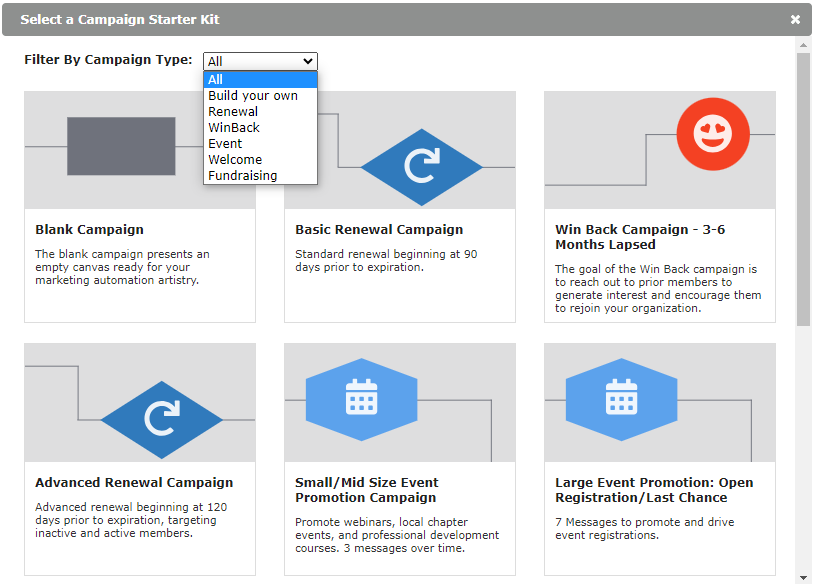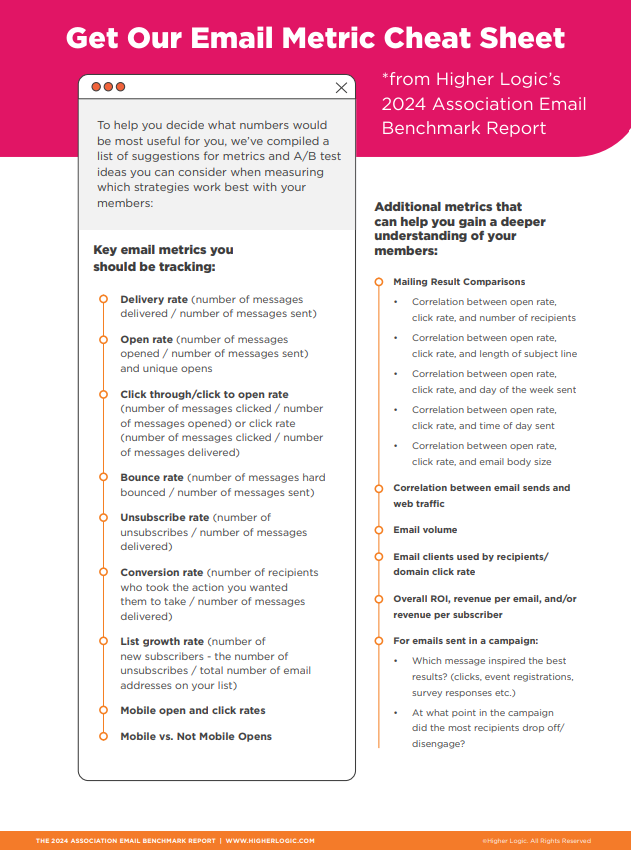Implementing a Marketing Automation Strategy
Don’t Just “Set It and Forget It”

A good marketing automation strategy is not just about setting up automated email campaigns and leaving them alone. Even though it has “automation” in the name, it requires ongoing attention. Marketing automation software, like Higher Logic Thrive Marketing, makes it easier to:
- Streamline tasks and empower teams to get more done
- Create more personalized and targeted marketing campaigns
- More effectively analyze email campaign performance
- Learn from and act on your audience’s digital behavior
When done well, implementing marketing automation also improves the performance of your marketing efforts. In Higher Logic’s 2024 Association Email Benchmark Report we found that organizations using marketing automation improved open rates by 5%.
That said, when you consider how to implement marketing automation, remember not to “set it and forget it.” A strong marketing automation strategy calls for ongoing measurement, evaluation and refinement.
In this article, we’ll walk through suggestions for your marketing automation strategy. We’ll also call out ways marketing automation software like Higher Logic Thrive Marketing can help.
The True Value of Marketing Automation
To truly harness the power of marketing automation, it’s essential to understand its core benefits. First and foremost, it allows you to deliver personalized content to your audience at the right time. By analyzing user behavior, preferences, and engagement patterns, you can tailor your messages to resonate with individual recipients. This level of personalization not only enhances user experience but also drives higher engagement rates.
Another significant advantage of marketing automation is efficiency. By automating repetitive tasks such as email campaigns, social media posts, and lead nurturing, your team can focus on more strategic initiatives. This not only saves time but also reduces the likelihood of human error, ensuring that your communications are consistent and timely.
Moreover, marketing automation provides valuable insights through analytics. You can track key performance indicators (KPIs) such as open rates, click-through rates, and conversion rates across full email campaigns instead of just individual email blasts. These metrics allow you to assess the effectiveness of your campaigns and make data-driven decisions.
How Do You Implement Marketing Automation?
Implementing marketing automation can seem daunting at first, but with a clear plan, it can be a smooth process. Here are some steps to help you get started:
1. Define Your Digital Campaign Goals:
Before diving into automation tools, take a moment to outline what you want to achieve. Are you looking to increase member acquisition, improve member engagement, or boost member retention? (Or all of the above?). Setting specific, measurable goals will guide your strategy and help you choose the right tools.
2. Choose the Right Marketing Automation Tools:
There are many marketing automation platforms available, each with its own features and pricing. Research and compare options based on your needs, budget, and the scalability of the tool. Popular choices include HubSpot and Mailchimp – but for associations, Higher Logic Thrive can be especially powerful. We have an industry-leading 99% deliverability rate and over two decades of experience working specifically with associations and nonprofits. Unlike cheaper, more limited marketing automation tools, Higher Logic Thrive was created to grow with you, with best-in-class integrations and add-ons. We’re also constantly innovating to incorporate the latest technology, including a suite of secure and helpful AI features.
3. Segment Your Audience:
Effective marketing automation relies on understanding your audience. Segment your contacts based on demographics, behavior, or interests. This allows you to tailor your messages and campaigns to specific groups, increasing the likelihood of engagement.

4. Set Up Automated Email Workflows:
Once have your audience segments ready and you’ve created personalized email content, it’s time to create automated workflows. These are sequences of actions triggered by specific events, such as a user signing up for a newsletter or abandoning a shopping cart. Workflows can include sending welcome emails, onboarding campaigns, event promotion, or personalized offers. Higher Logic Thrive Marketing comes with customizable pre-built marketing automation campaigns to help you get started.
5. Monitor and Optimize Your Campaigns:
After launching your automated campaigns, keep a close eye on their performance. Use the analytics provided by your automation tool to track engagement and conversion rates. Based on this data, make adjustments to your campaigns to improve results continuously. Higher Logic Thrive Marketing provides robust analytics and automatic reports to help you stay on top of your email campaign performance.
6. Train Your Team:
Ensure that your team is well-versed in using the automation tools. Provide training sessions and resources to help them understand how to leverage the technology effectively. A knowledgeable team will maximize the benefits of marketing automation. With marketing automation software like Higher Logic Thrive, you get top-tier support. We have an online community called the Higher Logic Users Group (HUG), where you can brainstorm with and ask advice from peers who also use the tool. We also have expert advisors who can help you strategize, build campaigns, and more!
Following these steps can help you successfully implement marketing automation at your organization. And remember, you don’t have to set up a massive, complicated marketing automation strategy overnight. Start small. Decide which email campaigns you want to start with (we suggest event or member renewal campaigns). Focus on setting up one campaign at a time, learning from each as you go and continually improving.
The result will be a more efficient marketing process, improved member engagement, and ultimately, better organizational outcomes. Embrace the power of automation, and watch your marketing efforts thrive!
What Marketing Automation Metrics Should You Measure?
Once you’ve implemented automated campaigns, you’ll need to regularly track their performance to gauge their effectiveness. Here are some key performance indicators (KPIs) to consider:

- Open Rates: This metric shows how many recipients opened your emails. A higher open rate indicates that your subject lines are engaging and relevant to your audience. Open rates can be a little unreliable, but they’re still worth looking at as a directional metric. Just remember to consider them in the context of your other metrics and your ultimate goal of the campaign you’re measuring.
- Click-Through Rates (CTR): This measures the percentage of people who clicked on links within your emails. A strong CTR suggests that your content resonates with your audience and encourages them to take action.
- Conversion Rates: Ultimately, the goal of your marketing efforts is to convert leads into customers or members. Tracking conversion rates will help you understand how effective your campaigns are at driving desired actions.
- Engagement and Lead Scoring: By assigning scores to members and leads based on their interactions with your content, you can personalize follow-ups and tailor your messaging to better meet their needs. Higher Logic Thrive has customizable engagement scoring, plus a web tracking feature, you can use to help you measure and act on member behavior.
- Return on Investment (ROI): Calculate the ROI of your marketing automation campaigns to determine their financial impact. This will help you justify your marketing budget and make informed decisions about future investments.
By regularly monitoring these metrics, you can gain valuable insights into your marketing automation performance. This data will enable you to make informed adjustments, optimize your campaigns, and ultimately enhance your overall marketing strategy. Remember, the key to success lies in continuous improvement and adapting to the needs of your audience. So, dive into the data, learn from it, and let your marketing automation journey flourish!
Conclusion
Marketing automation isn’t a one-and-done tactic—it’s a strategic, evolving approach to better understanding and engaging your audience. With the right strategy, tools, and mindset, you can streamline your processes, deliver personalized experiences, and drive stronger results across the board. By leveraging a platform like Higher Logic Thrive Marketing, you’re not just automating tasks—you’re empowering your team to work smarter, connect more meaningfully, and achieve lasting impact. So start small, keep optimizing, and let data guide your way to marketing success.




